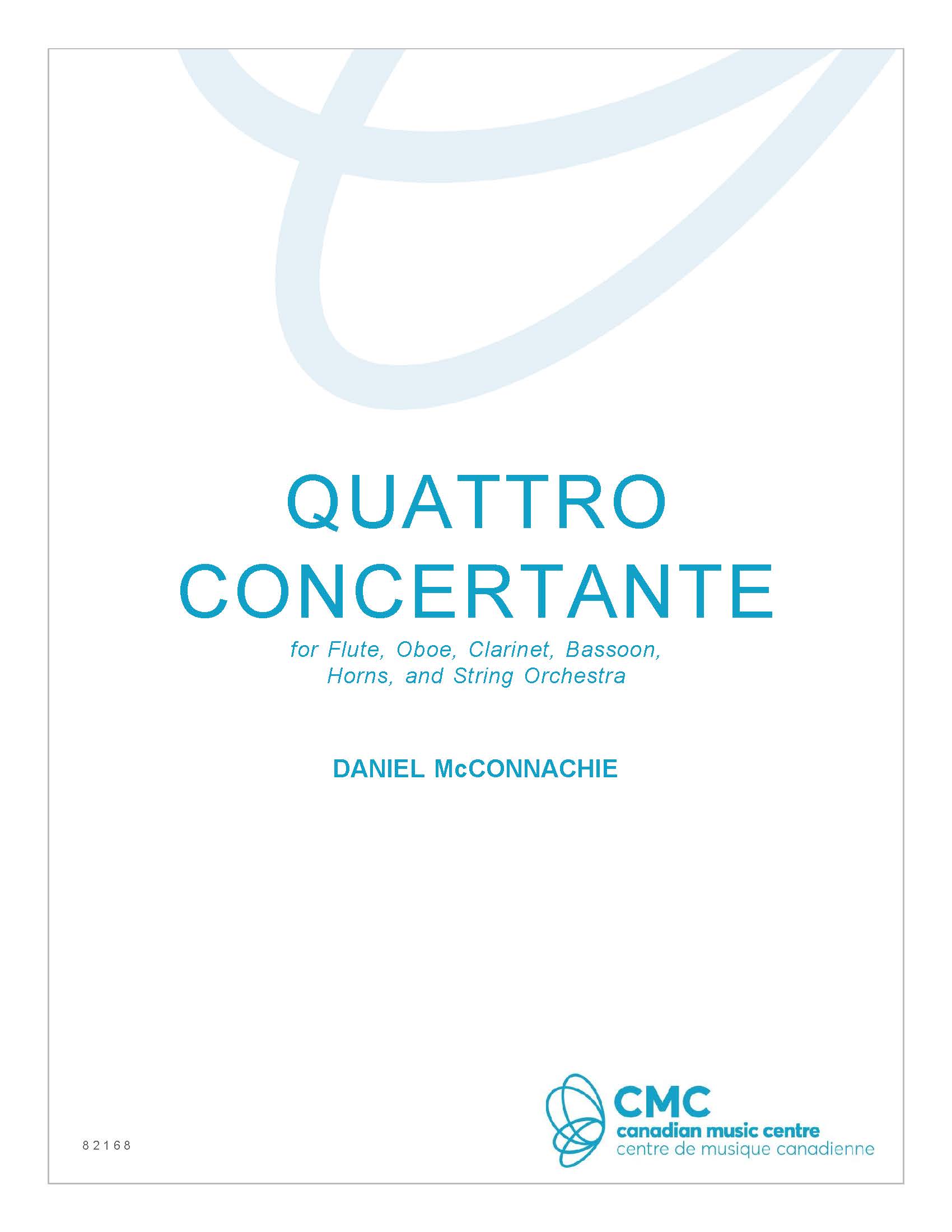Quattro Concertante is a work featuring a quartet of woodwind soloists, flute, oboe, clarinet, and bassoon, accompanied by an orchestra of two horns and strings. Presented here in three Celtic-inspired movements it explores the wide range of these instruments and the versatility that they possess melodically and harmonically as ensemble and solo performers. From the technical brilliance of the flute and clarinet to the gorgeous tones of the double reeds these instruments together can invoke many unique characteristics and emotions.
Movement One; There Came a Young Lady explores the interplay of the winds using the harmonic and rhythmic characteristics of the traditional jig form but set in a non-traditional ABA form. The winds exchange musical ideas either signally or in various groupings that highlight their musical and harmonic strengths. This interplay is supported throughout by the orchestra but especially so at the end with a full tutti bringing the movement to a close.
Movement Two; Lament for a Lost Love is a lyrical air that is a celebration of musical simplicity with all the attention focused on the melodic material’s exploration of the key of c minor through the use of the distinctive Scot Snap and set in a simple ABA form. The melody is passed among the soloists with support from the orchestra harmonically and rhythmically eventually leading to the full tutti of the B section. This is followed by a short, thinly scored, A section that brings the movement to a close.
Movement Three; The Road to Kingston is a set of three newly composed reel-like melodies structured in a classic Rondo form with the C section featuring the soloists performing as a quartet without orchestral accompaniment. An interesting feature is the call for the flutist to change to the piccolo later in the movement. This is a nod to the use of the penny whistle as found in much of this traditionally inspired music.
This work is dedicated to my wife Martha who always believed in us and the life we built together.

